Deborah Swift's Blog, page 35
October 13, 2015
Book Blog Tour - Spirit of the Highway
Here is the schedule for the blog tour for Spirit of the Highway
Big thank you to all historical fiction bloggers participating, and to Amy for organising it.
Monday, October 26
Guest Post at Passages to the Past
Tuesday, October 27
Review at Book Nerd
Spotlight & Excerpt at Let Them Read Books
Wednesday, October 28
Review at History From a Woman’s Perspective
Thursday, October 29
Review at With Her Nose Stuck in a Book
Monday, November 2
Review at The Maiden’s Court
Tuesday, November 3
Spotlight & Excerpt at Brooke Blogs
Thursday, November 5
Review at One Book Shy of a Full Shelf
Friday, November 6
Review at Bookramblings
Review at Just One More Chapter
Guest Post at One Book Shy of a Full Shelf
Please do drop by to support these bloggers. See you there!
Big thank you to all historical fiction bloggers participating, and to Amy for organising it.
Monday, October 26
Guest Post at Passages to the Past
Tuesday, October 27
Review at Book Nerd
Spotlight & Excerpt at Let Them Read Books
Wednesday, October 28
Review at History From a Woman’s Perspective
Thursday, October 29
Review at With Her Nose Stuck in a Book
Monday, November 2
Review at The Maiden’s Court
Tuesday, November 3
Spotlight & Excerpt at Brooke Blogs
Thursday, November 5
Review at One Book Shy of a Full Shelf
Friday, November 6
Review at Bookramblings
Review at Just One More Chapter
Guest Post at One Book Shy of a Full Shelf
Please do drop by to support these bloggers. See you there!
Published on October 13, 2015 03:53
October 8, 2015
New Anthology of Historical Essays
My post at English Historical fiction Authors this month is on the plunder of Basing House in the English Civil War. Read the post here.
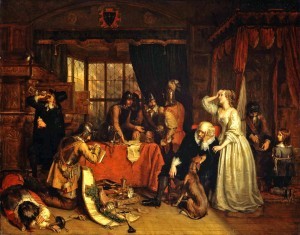
Basing House inspired some of the events in the Highway Trilogy where I imagined the occupants of Markyate Manor might have suffered a similar fate. The painting above is The Plundering of Basing House by Charles Landseer, 1836, courtesy of the Tate.
Another related post which features in their new anthology, Castles Customs and Kings Volume II, is about what happened when soldiers came to stay. Find the original blog post here. During this period, if soldiers were billeted on you, you had little choice in the matter, and their stay could be dangerous and destructive.
This whopping new anthology features several more articles from me, and also great articles from all your favourite historical fiction authors. Whether you like Romans, The Wars of the Roses, the Tudor Court, or Victoriana, there'll be something in here to tempt you, and much food for thought.


Basing House inspired some of the events in the Highway Trilogy where I imagined the occupants of Markyate Manor might have suffered a similar fate. The painting above is The Plundering of Basing House by Charles Landseer, 1836, courtesy of the Tate.
Another related post which features in their new anthology, Castles Customs and Kings Volume II, is about what happened when soldiers came to stay. Find the original blog post here. During this period, if soldiers were billeted on you, you had little choice in the matter, and their stay could be dangerous and destructive.
This whopping new anthology features several more articles from me, and also great articles from all your favourite historical fiction authors. Whether you like Romans, The Wars of the Roses, the Tudor Court, or Victoriana, there'll be something in here to tempt you, and much food for thought.

Published on October 08, 2015 02:38
September 29, 2015
Interview with Victoria Delderfield, author of The Secret Mother

I first met Vicky on the MA in Creative Writing at Lancaster, and loved the premise of this book, which she was working on at the time. Now, at last, two children and a whole lot of work later, The Secret Mother is finally out, and getting the recognition it deserves. Winner of the Hookline Competition for Book Group reads, this is a book that will make you ask questions about your cultural expectations, your relationships with your children, and what it is to be a mother.
What inspired you to start a book set in China?The novel emerged out of a short story I wrote featuring a Chinese factory worker called Mai Ling. She wouldn’t let me go until I’d written more of her story. Mai Ling is one in a million – or several million – but her life became special to me, I think because I wanted to understand what it might be like growing up in a culture so vastly different to my own. For me, an exciting part of writing – and reading - is making journeys through time and place that everyday life precludes.
I felt strongly that the best way to explore China’s massive social change would be through the life of an individual whose life was also in a state of economic, social and emotional flux. Whilst researching the novel, I was personally moved by the many stories of women, like Mai Ling, who leave homes and families and undertake physically exhausting work in factories in order to earn their own living and support their families. Mai Ling’s journey – both physical and psychological - from peasant girl to dagongmei (‘working girl’) and eventually mother is particular to China and the era in which it became a market economy.The novel developed into a story about overseas adoption when I realised that the global significance of Mai Ling’s life exceeded pure economics.
Are there any Chinese images from your novel that have particular resonance for you?I was very inspired by the photographic work of Polly Braden, Michael Wolf and Edward Burtynsky when writing The Secret Mother. Their work documents the lives of workers, like Mai Ling, caught up in the largest migration in human history as it occurred in China in the early nineties. I was haunted by their visual depictions of the mechanisation of the female body that’s required to support mass production and consumerism: factories teeming with identical uniforms, workers seated in grid formation - all carefully spaced and monitored to ensure maximum productivity. I liked the idea that Mai Ling’s pregnant body is in revolt against this homogeneity.
 Photo Credit: Polly Braden 'China Between'
Photo Credit: Polly Braden 'China Between'You started this book before having children of your own. Has being a mother made a difference to how you view Mai Ling as a character?I have an incredibly close relationship with my mum and this undoubtedly influenced Mai Ling’s characterisation, especially the fiercely protective and tenacious nature of Mai Ling’s love for her daughters. Letting go of one’s children is something all parents do to varying degrees and at various ages and stages so I hoped this theme would resonate with readers. Mai Ling must face the heart-wrenching decision of who will care for her babies, but she never relinquishes the emotional bonds. Mai Ling’s predicament is all the more poignant now that I’m a parent. I also appreciate more fully the absolute horror and fear that Nancy (the twins’ adoptive mother) feels at the prospect of losing her girls.Motherhood and family are themes I am sure to return to because my own family relationships are so personally significant.
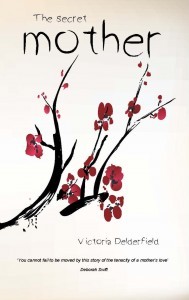 I loved the way the twins were so different. Which was the easier twin to write, and why?I’ve breathed my sixteen year old self into both girls – sixteen is a fun age to write about because characters are naturally evolving and identity is in flux. The twins definitely change throughout the course of the novel as their sense of identity matures. Jen is exceptionally smart, hard-working, brave, curious, sensitive and caring. Ricki would probably call her the goody two shoes of the family. I chose to write certain chapters from Jen’s point of view to show what was going on beneath the surface: her uncertainties, fears and deep desire for acceptance – especially from her twin. Jen has been learning GCSE Mandarin and wants to reconnect with her cultural heritage. Her openness is contrasted with Ricki’s seemingly stubborn refusal to confront the past. Ricki has internalised a lot of her hurt and confusion concerning her Chinese birth mother and I wanted her to heal. The scene featuring Ricki and May towards the end of the book was one of the most moving to write, but writing about characters with intense emotions is never easy because there’s always a big risk of tipping over into melodrama.
I loved the way the twins were so different. Which was the easier twin to write, and why?I’ve breathed my sixteen year old self into both girls – sixteen is a fun age to write about because characters are naturally evolving and identity is in flux. The twins definitely change throughout the course of the novel as their sense of identity matures. Jen is exceptionally smart, hard-working, brave, curious, sensitive and caring. Ricki would probably call her the goody two shoes of the family. I chose to write certain chapters from Jen’s point of view to show what was going on beneath the surface: her uncertainties, fears and deep desire for acceptance – especially from her twin. Jen has been learning GCSE Mandarin and wants to reconnect with her cultural heritage. Her openness is contrasted with Ricki’s seemingly stubborn refusal to confront the past. Ricki has internalised a lot of her hurt and confusion concerning her Chinese birth mother and I wanted her to heal. The scene featuring Ricki and May towards the end of the book was one of the most moving to write, but writing about characters with intense emotions is never easy because there’s always a big risk of tipping over into melodrama.What is your favourite book club read, and why? Can you recommend a book to read as a companion volume to The Secret Mother?I love my book club – we’re a small group of friends that spend half our time getting passionate about books and the rest catching up on life and sharing our laughter and troubles over tea and cake. The books that we read have become special to me because through them I can chart the ups and downs of our lives. Our most recent read was The Buried Giant by Kazuo Ishiguro. We heard him speak at Manchester Central Library the day after its publication. This greatly helped our understanding and appreciation of the novel – which is enigmatic, imaginative, ambitious and very moving. He is a writer I have long admired for his thoughtful ability to re-invent genres.
A good companion to The Secret Mother might be Emma Donoghue’s Room, a novel which also depicts the tenacity of a mother’s love for her child, albeit in very different circumstances.
find Victoria on her website or chat to her on twitter @delderfiBUY THE BOOK
Published on September 29, 2015 07:49
September 28, 2015
The Twenty First Century Tudors - The books of Terry Tyler
 I've been reading the novels of Terry Tyler, whose books thrust the plots of Tudor history, particularly the Tudor Court, into 20th/21st century big business. In the first book we meet Harry Lanchester (HenryVIII), owner of Lanchester Estates, and his six wives.
I've been reading the novels of Terry Tyler, whose books thrust the plots of Tudor history, particularly the Tudor Court, into 20th/21st century big business. In the first book we meet Harry Lanchester (HenryVIII), owner of Lanchester Estates, and his six wives. In the second, after his death, we see the machinations for the 'throne' of Lanchester Estates. I really enjoyed the first one, but the second one is superb.
In the second, after his death, we see the machinations for the 'throne' of Lanchester Estates. I really enjoyed the first one, but the second one is superb.What Terry Tyler does really well is to get the reader into the characters' heads, and by providing us with contrasting personalities this never becomes claustrophobic. I enjoyed experiencing being the dull wife Amy, the neurotic, unbalanced Isabella (in love with the ghastly Philip Castillo of Spain) and the sad teenage monster Jaz.
And I loved them all. On the surface the characters might seem unlikeable, but I defy you not to understand their point of view, and this is what Tyler does so well, eliciting reader empathy.
The boardroom battles for control of the business ring true too - complete with the freeloaders, the over-ambitious, and the people who just want a quiet life. Tudor fans will find the links to history give an added level of interest to what is already an excellent book.
Those readers who remember Dallas and Dynasty on TV will love these, as will Tudor fiction fans, lovers of Jackie Collins blockbusters, and anyone else who loves a good read.
Terry's Amazon Page
Terry's advice for indie writers
Follow Terry on Twitter
Published on September 28, 2015 04:16
September 27, 2015
Ghosts of Markyate Manor - Hermit, Heiress, Highwayman
Markyate Manor - scene of many hauntings, is the setting for the Highway Trilogy: Shadow on the Highway, Spirit of the Highway, and Lady of the Highway.
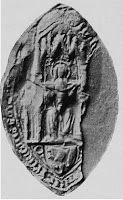 The name Markyate is derived from the Old English words meac and geat and means 'the gate at the boundary', presumably between Hertfordshire and Bedfordshire. In the 12th century, with the consent of his abbot, a monk went out from st Alban's and into the woods to seek a place to make a hermitage. God apparently guided him to Caddington, not far from Watling Street. There he lived a solitary life, until a woman came to him, Christina, in the firm belief that she too was called to a silent life of contemplation. He duly fastened her into an adjoining cell, where she was walled in for for four years! She saw nobody in all that time, only coming out to walk at dusk when she would see not a soul, supporting herself through her exquisite needlework. She was (unsurprisingly) taken over by heavenly visions, and when the original monk died she had gathered quite a following and was allowed to set up a priory under Benedictine rule. The seal of the Priory can be seen above, and more about Christina's extraordinary life can be found here.
The name Markyate is derived from the Old English words meac and geat and means 'the gate at the boundary', presumably between Hertfordshire and Bedfordshire. In the 12th century, with the consent of his abbot, a monk went out from st Alban's and into the woods to seek a place to make a hermitage. God apparently guided him to Caddington, not far from Watling Street. There he lived a solitary life, until a woman came to him, Christina, in the firm belief that she too was called to a silent life of contemplation. He duly fastened her into an adjoining cell, where she was walled in for for four years! She saw nobody in all that time, only coming out to walk at dusk when she would see not a soul, supporting herself through her exquisite needlework. She was (unsurprisingly) taken over by heavenly visions, and when the original monk died she had gathered quite a following and was allowed to set up a priory under Benedictine rule. The seal of the Priory can be seen above, and more about Christina's extraordinary life can be found here.
The Priory did not fare well during the dissolution because it had become run down, and there were charges of corruption and lack of chastity brought against the nuns. The Priory was eventually demolished in 1537, and Markyate Manor was built on its footprint, although it is still sometimes known as Markyate Cell - George Ferrers retained the name when he bought the land in 1548. The Ferrers family controlled this land when Markyate Cell was the home of Katherine Ferrers, also sometimes known as The Wicked Lady, a title I am hoping to overturn!
The Manor was left to Katherine by her mother, but it was soon in the control of her uncle, Simon Fanshawe, and she was forced into an arranged marriage with his nephew, Thomas Fanshawe. After that, the story gets even more interesting as the legend credits her with being a notorious highwaywoman. She lived in the house through the years of the turbulent English Civil War, much of it alone as her menfolk were away fighting. She finally died there, having been mortally wounded trying to rob a coach on Nomansland.
 Her ghost has been seen dressed in highwayman clothes riding her horse at full gallop, and in 1840 part of Markyate Cell was destroyed by fire, and the blaze was blamed on Lady Katherine. Whilst helping to put out the fire several locals said that they felt a ghostly presence and that they were being watched, by the ghost of Katherine. But Katherine is not the only ghost that haunts this building - in the late 1850s workmen repairing a wall saw the figure of a nun. Perhaps this was the anchorite Christina. The nun has been seen several times since, walking in an avenue near St John's Church.
Her ghost has been seen dressed in highwayman clothes riding her horse at full gallop, and in 1840 part of Markyate Cell was destroyed by fire, and the blaze was blamed on Lady Katherine. Whilst helping to put out the fire several locals said that they felt a ghostly presence and that they were being watched, by the ghost of Katherine. But Katherine is not the only ghost that haunts this building - in the late 1850s workmen repairing a wall saw the figure of a nun. Perhaps this was the anchorite Christina. The nun has been seen several times since, walking in an avenue near St John's Church.
In 1957 the bypass around Markyate was being built. A night watchman was sitting by his brazier one night when he looked up and saw someone warming their hands by the fire. The figure was that of a young man who promptly vanished as the night watchman was looking at him. Was this an appearance of Markyate's legendary Phantom who may also haunt Hicks Road and the High Street? Luton Paranormal Society
So it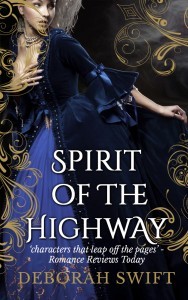 was not just Lady Katherine Fanshawe that haunted Markyate Manor. There was also a young man.
was not just Lady Katherine Fanshawe that haunted Markyate Manor. There was also a young man.
There has always been a mysterious figure, Ralph Chaplin, associated with the legend, although I can find no trace of him in historical records. That gave me fuel for thought, and led to the story-line for 'Spirit of the Highway'.
Like to know more? check out this article in the Daily Mail for a summary of the life and legend of Lady Katherine Ferrers (Fanshawe).Spirit of the Highway is out today, published by Endeavour Press. It is suitable for teens 14+ (and adults too!).
Amazon US Amazon UK
 The name Markyate is derived from the Old English words meac and geat and means 'the gate at the boundary', presumably between Hertfordshire and Bedfordshire. In the 12th century, with the consent of his abbot, a monk went out from st Alban's and into the woods to seek a place to make a hermitage. God apparently guided him to Caddington, not far from Watling Street. There he lived a solitary life, until a woman came to him, Christina, in the firm belief that she too was called to a silent life of contemplation. He duly fastened her into an adjoining cell, where she was walled in for for four years! She saw nobody in all that time, only coming out to walk at dusk when she would see not a soul, supporting herself through her exquisite needlework. She was (unsurprisingly) taken over by heavenly visions, and when the original monk died she had gathered quite a following and was allowed to set up a priory under Benedictine rule. The seal of the Priory can be seen above, and more about Christina's extraordinary life can be found here.
The name Markyate is derived from the Old English words meac and geat and means 'the gate at the boundary', presumably between Hertfordshire and Bedfordshire. In the 12th century, with the consent of his abbot, a monk went out from st Alban's and into the woods to seek a place to make a hermitage. God apparently guided him to Caddington, not far from Watling Street. There he lived a solitary life, until a woman came to him, Christina, in the firm belief that she too was called to a silent life of contemplation. He duly fastened her into an adjoining cell, where she was walled in for for four years! She saw nobody in all that time, only coming out to walk at dusk when she would see not a soul, supporting herself through her exquisite needlework. She was (unsurprisingly) taken over by heavenly visions, and when the original monk died she had gathered quite a following and was allowed to set up a priory under Benedictine rule. The seal of the Priory can be seen above, and more about Christina's extraordinary life can be found here.The Priory did not fare well during the dissolution because it had become run down, and there were charges of corruption and lack of chastity brought against the nuns. The Priory was eventually demolished in 1537, and Markyate Manor was built on its footprint, although it is still sometimes known as Markyate Cell - George Ferrers retained the name when he bought the land in 1548. The Ferrers family controlled this land when Markyate Cell was the home of Katherine Ferrers, also sometimes known as The Wicked Lady, a title I am hoping to overturn!

The Manor was left to Katherine by her mother, but it was soon in the control of her uncle, Simon Fanshawe, and she was forced into an arranged marriage with his nephew, Thomas Fanshawe. After that, the story gets even more interesting as the legend credits her with being a notorious highwaywoman. She lived in the house through the years of the turbulent English Civil War, much of it alone as her menfolk were away fighting. She finally died there, having been mortally wounded trying to rob a coach on Nomansland.
 Her ghost has been seen dressed in highwayman clothes riding her horse at full gallop, and in 1840 part of Markyate Cell was destroyed by fire, and the blaze was blamed on Lady Katherine. Whilst helping to put out the fire several locals said that they felt a ghostly presence and that they were being watched, by the ghost of Katherine. But Katherine is not the only ghost that haunts this building - in the late 1850s workmen repairing a wall saw the figure of a nun. Perhaps this was the anchorite Christina. The nun has been seen several times since, walking in an avenue near St John's Church.
Her ghost has been seen dressed in highwayman clothes riding her horse at full gallop, and in 1840 part of Markyate Cell was destroyed by fire, and the blaze was blamed on Lady Katherine. Whilst helping to put out the fire several locals said that they felt a ghostly presence and that they were being watched, by the ghost of Katherine. But Katherine is not the only ghost that haunts this building - in the late 1850s workmen repairing a wall saw the figure of a nun. Perhaps this was the anchorite Christina. The nun has been seen several times since, walking in an avenue near St John's Church.In 1957 the bypass around Markyate was being built. A night watchman was sitting by his brazier one night when he looked up and saw someone warming their hands by the fire. The figure was that of a young man who promptly vanished as the night watchman was looking at him. Was this an appearance of Markyate's legendary Phantom who may also haunt Hicks Road and the High Street? Luton Paranormal Society
So it
 was not just Lady Katherine Fanshawe that haunted Markyate Manor. There was also a young man.
was not just Lady Katherine Fanshawe that haunted Markyate Manor. There was also a young man.There has always been a mysterious figure, Ralph Chaplin, associated with the legend, although I can find no trace of him in historical records. That gave me fuel for thought, and led to the story-line for 'Spirit of the Highway'.
Like to know more? check out this article in the Daily Mail for a summary of the life and legend of Lady Katherine Ferrers (Fanshawe).Spirit of the Highway is out today, published by Endeavour Press. It is suitable for teens 14+ (and adults too!).
Amazon US Amazon UK
Published on September 27, 2015 07:09
September 11, 2015
Female Mystics in Fiction
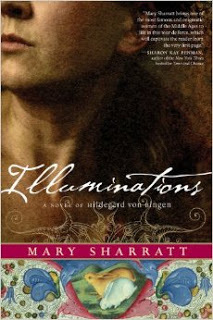
I have just finished 'Illuminations' by Mary Sharrat, about Hildegard von Bingen. A reader might be surprised that there could be so much plot in a book which is essentially about a woman enclosed firstly as an anchorite, and later as a nun. However the enclosed nature of her life brings Hildegard into conflict not only with her 'captors' but also with those with whom she shares her religious life, and this provides Sharrat with the meat of the novel. It is also a fascinating glimpse into how difficult living the monastic life actually is. There is Cuno, the jealous Abbott, Volmar her conflicted friend, and the young novices she rescues who later turn to bite the hand that feeds them.
Of course what sustains Hildegard is her relationship with the Divine, and her music. What sustains the novel is the fact that we empathise with Hildegard almost immediately - who could not, when she is a child walled up against her will? From the very beginning we follow her through her long life as she strives to build her place within Christendom, and finally founds her abbey.
From a spiritual perspective, the novel is not overly preachy, but rich with quotations from Hildegard's songs and writings, used appropriately through the text. We witness the 'greening'of her life as she becomes more accepting and less resistant to her lot, and as she grows in maturity casting off the selfishness and egotism of material concerns. Highly recommended.
Other novels I have read that feature diverse women and their spirituality are:
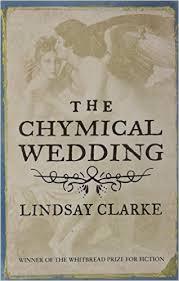


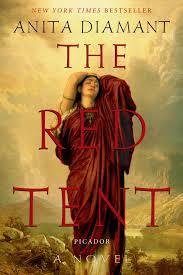 The Chymical Wedding is about alchemy as a way of spiritual transformation and is set in Victorian England. Evensong picks apart episcopal ministry in a small Virginian town in the USA. The Mists of Avalon explores Arthurian legends and how the Pagan Priestess Morgaine copes with the new religion of Christianity. The Red Tent is about women's mysteries in the Bible, told through the life of Dinah.These are all excellently-written books which will provide a great plot, plus spiritual depth and food for thought.Please do recommend more in this vein, that you feel I would like.
The Chymical Wedding is about alchemy as a way of spiritual transformation and is set in Victorian England. Evensong picks apart episcopal ministry in a small Virginian town in the USA. The Mists of Avalon explores Arthurian legends and how the Pagan Priestess Morgaine copes with the new religion of Christianity. The Red Tent is about women's mysteries in the Bible, told through the life of Dinah.These are all excellently-written books which will provide a great plot, plus spiritual depth and food for thought.Please do recommend more in this vein, that you feel I would like.
Published on September 11, 2015 04:44
June 24, 2015
The Importance of Presence for a Writer
As a writer I have been encouraged by my publishers to meet my readers online. When having an online conversation I am often talking to a small square icon or thumbnail, yet this picture is very important to me as an idea or representation of the essence of the person.
Recently I went to a writing conference and looked for all the people I had met online. One by one I managed to identify each person from their thumbnail, but unsurprisingly the real person was always radically different from the person I had constructed in my mind from the online conversation. The icon, along with the typed conversation, flattens out the persona so that it is hard to get a sense of who is actually there, behind the words.
When confronted with a real individual though, it is easy to hear the music of the voice, see the posture, appreciate the energetic or listening quality of the personality. In these days of online relationships it is easy to forget this presence – the most important part of the person.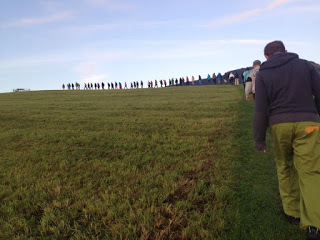
Presence implies a deeper more connected awareness of the world around us, and so the ability to be a vehicle for what needs to be done. I believe words can carry presence if the writer is aware whilst writing; and that words can carry a certain intent. After all, without the written form so few religious or spiritual ideas of the past would have survived.
Yet to look at writing only as a way to preserve ideas, i.e. the end result, is to miss the point, and to forget the importance of presence. Writing is a form like any other artistic endeavour where the process is as important as the outcome.
 Click to read PDF
Click to read PDF
In her classic book, still in print since 1934, ‘Becoming a Writer’ Dorothea Brande says that excellent writing has ‘innocence of eye’ and ‘freshness of response’. To create these qualities we must discipline ourselves to stop ‘doing’ and spend more time ‘being.’ From stillness of mind and body united, a new perspective can arise.
To maintain presence in writing is to cultivate space in oneself to let new ideas emerge, but more importantly it is to maintain a space for the response from the reader. After all it is not only the writer, but the reader who has to imagine the book. Skilful writing is not only about what to include, but more often about where to leave things open.
I have been a meditator all my adult life, and that is how I find presence in my life. Other people find it by walking in nature, by using mindfulness techniques, or practising yoga. Do feel free to share how you nurture this aspect of your writing.
Recently I went to a writing conference and looked for all the people I had met online. One by one I managed to identify each person from their thumbnail, but unsurprisingly the real person was always radically different from the person I had constructed in my mind from the online conversation. The icon, along with the typed conversation, flattens out the persona so that it is hard to get a sense of who is actually there, behind the words.
When confronted with a real individual though, it is easy to hear the music of the voice, see the posture, appreciate the energetic or listening quality of the personality. In these days of online relationships it is easy to forget this presence – the most important part of the person.

Presence implies a deeper more connected awareness of the world around us, and so the ability to be a vehicle for what needs to be done. I believe words can carry presence if the writer is aware whilst writing; and that words can carry a certain intent. After all, without the written form so few religious or spiritual ideas of the past would have survived.
Yet to look at writing only as a way to preserve ideas, i.e. the end result, is to miss the point, and to forget the importance of presence. Writing is a form like any other artistic endeavour where the process is as important as the outcome.
 Click to read PDF
Click to read PDFIn her classic book, still in print since 1934, ‘Becoming a Writer’ Dorothea Brande says that excellent writing has ‘innocence of eye’ and ‘freshness of response’. To create these qualities we must discipline ourselves to stop ‘doing’ and spend more time ‘being.’ From stillness of mind and body united, a new perspective can arise.
To maintain presence in writing is to cultivate space in oneself to let new ideas emerge, but more importantly it is to maintain a space for the response from the reader. After all it is not only the writer, but the reader who has to imagine the book. Skilful writing is not only about what to include, but more often about where to leave things open.
I have been a meditator all my adult life, and that is how I find presence in my life. Other people find it by walking in nature, by using mindfulness techniques, or practising yoga. Do feel free to share how you nurture this aspect of your writing.
Published on June 24, 2015 03:26
June 7, 2015
UK Independent Publishers - a 'Do they add value?' check

I meet regularly with other novelists to critique our works in progress, drink tea, and discuss the various merits of the biscuits. Recently at one of my novelists group meetings we were discussing independent publishers who might publish a full length novel. I argued that there were not that many, but one of the other group members recently emailed me to say that the Independent Publishers Guild UK (www.ipg.uk.com) have a staggering 580 members!
So why do I say there are not that many ?
The answer is, because in my opinion very few add value for a novelist, and some add so little value that they are in fact proxy self-publishing.
There are of course loads of independent publishers that publish everything from memoirs to military to experimental.(eg local-to-me Cicerone Press that publishes mountaineering guides) And a lot of other so-called 'independent' publishers that are actually assisted self-publishing companies e.g. the well-respected Troubadour, Silverwood. (But these self-publishing services will cost you - and rightly so, for the various services they offer.)
But in fact there are very few independents that publish full length novels, don't charge the author anything at all, and do add value.
These days most publishers of fiction offer e-books as a matter of course, (and some only e-books) so lets assume that as a given, that they will at least upload your book to Amazon. Publishing is easy these days, so publishers have to do more than just upload an ebook and offer a badly-designed POD paperback to win my vote.
So what exactly do I mean by 'add value?'
PHYSICAL VALUE a) Offer distribution of physical books to bookshops (ie I don't have to carry my books to my local bookseller myself)
b) Offer proper editing, proof-reading, interior layout and typesetting (i.e not just an edit through an online programme such as Autocrit, or reproducing your Word Document as a book)
c) Offer a print run (however limited) that is not just Print on Demand such as CreateSpace. By the time the publisher adds their cut, it makes the books too expensive in comparison with other traditional publishers, and therefore they fail to sell. Who will buy a £12.99 paperback when similar titles sell for £7.99?
d) Offer an individual marketing strategy for your book, including promoting it to bookshops and libraries, in other words not just bunging it on their website and newsletter and hoping for the best. I reckon many independent publishers fail on one or more of those counts. They rely on you to sell your books to family, friends and your network, and then take royalties for the very little effort they have put in, which usually just involves adding a cheaply-designed cover and uploading your word document as a book to kindle, POD and their website. I admit these things take time, and incur costs for the publisher. But in most cases you would be better off self-publishing than giving this type of publisher a substantial part of your royalties when they add so little value to what is in the end your product.
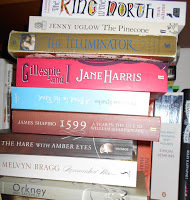
There are many 'independent' publishers that look convincing, but are actually not that good for the author. Eg take a look at this fairly typical independent publisher It looks great, until you read under their submissions guidelines: 'Depending on how many we think it could sell, we offer varying levels of contract. About one in ten of the titles on the list have a subsidy from the author, directed either towards more editorial or marketing work than we can normally provide.' Non-fiction sells well, so perhaps 1 in ten is actually most of the fiction, but of course you wouldn't know that if you were the submitting author.
or this one: 'A traditional partnership agreement entails the same benefits as a mainstream agreement. However, as the writer you may be asked to cover part of the cost of publishing the book. We follow all traditional industry etiquettes with regards to the promotion and marketing of the title in addition to all other avenues involved in the process.'
From another niche Independent Publisher website: 'We believe that as an author it is your responsibility to ensure that your work is of a reasonable standard before submitting to us. We can recommend a proof editor if you wish but that would be outside of our arrangement with you and you would contract them yourself.'
If you are going to pay, why not self-publish or use openly assisted self-publishing like Silverwood Books?
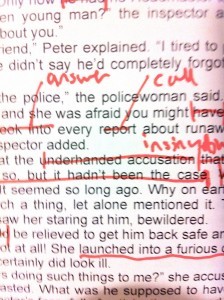
PSYCHOLOGICAL VALUE
Of course I am not negating the psychological value of having your work accepted by a publisher. After receiving a lot of rejections (and we all get them!) it feels brilliant to have your book accepted by somebody. Anybody! A friend of mine recently had her novel accepted by a small independent publisher. She was over the moon until she read on Link'd In that her commissioning editor had just left school, had never worked in publishing before, but had done two weeks work experience for a book promotion company. So if literary validation is important to you, don't forget to Google who is reading your manuscript and whether they are actually more qualified to make a judgement on your work than your local newsagent.
However, there can certainly be psychological (and monetary) value in accessing a like-minded community. If you have a book that suits a niche audience, then there can be value in a niche publisher and in becoming part of that network, but check the network is not just other hopeful authors like yourself.
a) See if the books from that publisher have won any prizes or been nominated for an award (or sold millions - we wish!)
b) Check whether any of the books been endorsed by writers or critics you have actually heard of, not just 'Brilliant' - Amazon Reviewer
b) For niche markets, eg horror, fantasy, experimental, check that the publisher seems to have good networking links with their community. Eg Do they blog? If so, check out their blog.
CONVENIENCE VALUEOK, so you are technologically inept, and it's much easier to hand it to a publisher and let them do it, if they accept your submission. But if it doesn't get edited or properly laid out, if it has a bad cover, if it only reaches a few other writers who go to their website, and if it is too expensive to be attractive in bookshops, the convenience soon becomes inconvenient. You haven't the control to do anything about it, the way you would have had if you had self published - and you are still paying them via your royalties.
However, for full length commercial/literary novels I can safely say the following independent print publishers do add value - not an exhaustive list, and in no particular order. They all have beautiful websites and beautiful books that you sometimes see in bookshops - a good sign.
Bloomsbury*, Alma, Myrmidon, Honno Press, Parthian Books, Myriad Editions, Allison and Busby*, Serpent's Tail, Valley Press, Canongate*, Legend, Salt, Cinnamon Press, Accent Press, Cillian Press.
Some of these require you have an agent right now to submit (those marked with asterisks), some don't, but for a bigger list of small independent publishers check out Nottingham Writers Studio. If you want to see a list of other small presses, check out Lollipop. And here's a complete list of UK publishers competing in The People's Book Prize.
Anyone who can recommend more excellent independent publishers to add to this list - please do!
Thank you to crime noir writer Tess Makovesky for prompting this post. Find her at www.tessmakovesky.com
Published on June 07, 2015 09:27
May 20, 2015
Editing historical fiction, my way
I am in the middle of edits for two of my books, one a young adult novel and one a 400 page adult novel. These are the edits I make before I send out to my agent, a publisher, or in some cases the public. There will be other edits later, but as some publishing houses edit very heavily, some hardly at all, it pays to be picky with your work.
Recently I have seen a plethora of writing books suggesting that you should edit in 'one pass'.
This does not work for me because of the amount of research I need to check. So here is my editing process. It takes as long as the actual writing of the book.

I always work with a printed copy of the manuscript, and initially I am editing for story. I read like a reader and not a writer, to identify whether the nuts and bolts of the story work. At its heart, story is about change, so if it's getting static, alarm bells ring. I mark parts that are slow or boring with a big red pen. Though sometimes boring does not mean cutting stuff, but adding more detail to make it interesting and bring it to life.
Usually the first time I print out the draft it needs a lot of re-working - new chunks need to be written and others lopped off. At this stage I do extensive re-writes. That copy is then like an old rag covered in scribble and crossings out and is re-cycled onto our log-burner!
After more work on the computer to streamline the story, I'm ready for a more detailed edit. Usually I send this newer version out to some readers so I can incorporate their comments when I work on the next edit. One way of speeding it up is to mark all the pages that need edits with sticky post-its. I use the same manuscript and just go through it with different colours for each editing pass. Then with the copy next to me with its rainbow fringe, I trawl through the manuscript a page at a time making all the necessary alterations. At this point I am usually fuelled by coffee, a looming deadline, and a desperation to get it finished and move onto the next book.
 Here are the passes I make:edit for character. Go through each major character's arc of action and emotion. Check what they are doing in the scenes where they are absent, and try to refer to these actions in the scenes where they are present. Get a sense of their daily routine - for example how long it takes them to dress, their relationship with servants or 'betters', and their class in relation to other characters. Check how they are feeling; that it is consistent, and that it has development. Make sure their attitudes are consistent with the period.edit for theme. Highlight any themes that drive the novel, make sure sub-plots echo these themes. Look for metaphor, symbol and meaning. Try to find parallels with today, and highlight them. They will be useful when you have to promote or tell people about your book.edit for time-scale. In historical fiction it is particularly important to get dates right, and for the narrative to fit within certain fixed parameters or historical milestones. Check travelling times - horseback and boat are very slow, but mail can be surprisingly quick.edit like the most eagle-eyed historian. I have made small errors in my books, (really sorry ) but not because I did not care - I did my best to make the history right! Often it is little things (like the taking for granted of walls and hedges before the enclosures act) that catch you out. Question everything and double check your research. Keep notes in case someone queries your sources. Make notes about where you have changed, bent, or ignored supposedly 'known facts', and why. Two books down the line you might not remember why, but an expert reading your book is bound to write to you and ask.edit for anachronistic dialogue, and for dialogue that fits the character. It is easy to slip into modernism in dialogue, and the quickest way to lose your historical atmosphere. Seemingly innocuous phrases like 'Oh my God' have taken on a distinctly teenage flavour since OMG!edit for good English - cut out uninteresting language, spelling mistakes, faulty grammar and typos, or get someone else to proofread it.My novel grows about 10% during this edit as I re-work dialogue, fill plot loopholes and deepen character.What is your editing process? Do you have any tips or tricks?
Here are the passes I make:edit for character. Go through each major character's arc of action and emotion. Check what they are doing in the scenes where they are absent, and try to refer to these actions in the scenes where they are present. Get a sense of their daily routine - for example how long it takes them to dress, their relationship with servants or 'betters', and their class in relation to other characters. Check how they are feeling; that it is consistent, and that it has development. Make sure their attitudes are consistent with the period.edit for theme. Highlight any themes that drive the novel, make sure sub-plots echo these themes. Look for metaphor, symbol and meaning. Try to find parallels with today, and highlight them. They will be useful when you have to promote or tell people about your book.edit for time-scale. In historical fiction it is particularly important to get dates right, and for the narrative to fit within certain fixed parameters or historical milestones. Check travelling times - horseback and boat are very slow, but mail can be surprisingly quick.edit like the most eagle-eyed historian. I have made small errors in my books, (really sorry ) but not because I did not care - I did my best to make the history right! Often it is little things (like the taking for granted of walls and hedges before the enclosures act) that catch you out. Question everything and double check your research. Keep notes in case someone queries your sources. Make notes about where you have changed, bent, or ignored supposedly 'known facts', and why. Two books down the line you might not remember why, but an expert reading your book is bound to write to you and ask.edit for anachronistic dialogue, and for dialogue that fits the character. It is easy to slip into modernism in dialogue, and the quickest way to lose your historical atmosphere. Seemingly innocuous phrases like 'Oh my God' have taken on a distinctly teenage flavour since OMG!edit for good English - cut out uninteresting language, spelling mistakes, faulty grammar and typos, or get someone else to proofread it.My novel grows about 10% during this edit as I re-work dialogue, fill plot loopholes and deepen character.What is your editing process? Do you have any tips or tricks?
Recently I have seen a plethora of writing books suggesting that you should edit in 'one pass'.
This does not work for me because of the amount of research I need to check. So here is my editing process. It takes as long as the actual writing of the book.

I always work with a printed copy of the manuscript, and initially I am editing for story. I read like a reader and not a writer, to identify whether the nuts and bolts of the story work. At its heart, story is about change, so if it's getting static, alarm bells ring. I mark parts that are slow or boring with a big red pen. Though sometimes boring does not mean cutting stuff, but adding more detail to make it interesting and bring it to life.
Usually the first time I print out the draft it needs a lot of re-working - new chunks need to be written and others lopped off. At this stage I do extensive re-writes. That copy is then like an old rag covered in scribble and crossings out and is re-cycled onto our log-burner!
After more work on the computer to streamline the story, I'm ready for a more detailed edit. Usually I send this newer version out to some readers so I can incorporate their comments when I work on the next edit. One way of speeding it up is to mark all the pages that need edits with sticky post-its. I use the same manuscript and just go through it with different colours for each editing pass. Then with the copy next to me with its rainbow fringe, I trawl through the manuscript a page at a time making all the necessary alterations. At this point I am usually fuelled by coffee, a looming deadline, and a desperation to get it finished and move onto the next book.
 Here are the passes I make:edit for character. Go through each major character's arc of action and emotion. Check what they are doing in the scenes where they are absent, and try to refer to these actions in the scenes where they are present. Get a sense of their daily routine - for example how long it takes them to dress, their relationship with servants or 'betters', and their class in relation to other characters. Check how they are feeling; that it is consistent, and that it has development. Make sure their attitudes are consistent with the period.edit for theme. Highlight any themes that drive the novel, make sure sub-plots echo these themes. Look for metaphor, symbol and meaning. Try to find parallels with today, and highlight them. They will be useful when you have to promote or tell people about your book.edit for time-scale. In historical fiction it is particularly important to get dates right, and for the narrative to fit within certain fixed parameters or historical milestones. Check travelling times - horseback and boat are very slow, but mail can be surprisingly quick.edit like the most eagle-eyed historian. I have made small errors in my books, (really sorry ) but not because I did not care - I did my best to make the history right! Often it is little things (like the taking for granted of walls and hedges before the enclosures act) that catch you out. Question everything and double check your research. Keep notes in case someone queries your sources. Make notes about where you have changed, bent, or ignored supposedly 'known facts', and why. Two books down the line you might not remember why, but an expert reading your book is bound to write to you and ask.edit for anachronistic dialogue, and for dialogue that fits the character. It is easy to slip into modernism in dialogue, and the quickest way to lose your historical atmosphere. Seemingly innocuous phrases like 'Oh my God' have taken on a distinctly teenage flavour since OMG!edit for good English - cut out uninteresting language, spelling mistakes, faulty grammar and typos, or get someone else to proofread it.My novel grows about 10% during this edit as I re-work dialogue, fill plot loopholes and deepen character.What is your editing process? Do you have any tips or tricks?
Here are the passes I make:edit for character. Go through each major character's arc of action and emotion. Check what they are doing in the scenes where they are absent, and try to refer to these actions in the scenes where they are present. Get a sense of their daily routine - for example how long it takes them to dress, their relationship with servants or 'betters', and their class in relation to other characters. Check how they are feeling; that it is consistent, and that it has development. Make sure their attitudes are consistent with the period.edit for theme. Highlight any themes that drive the novel, make sure sub-plots echo these themes. Look for metaphor, symbol and meaning. Try to find parallels with today, and highlight them. They will be useful when you have to promote or tell people about your book.edit for time-scale. In historical fiction it is particularly important to get dates right, and for the narrative to fit within certain fixed parameters or historical milestones. Check travelling times - horseback and boat are very slow, but mail can be surprisingly quick.edit like the most eagle-eyed historian. I have made small errors in my books, (really sorry ) but not because I did not care - I did my best to make the history right! Often it is little things (like the taking for granted of walls and hedges before the enclosures act) that catch you out. Question everything and double check your research. Keep notes in case someone queries your sources. Make notes about where you have changed, bent, or ignored supposedly 'known facts', and why. Two books down the line you might not remember why, but an expert reading your book is bound to write to you and ask.edit for anachronistic dialogue, and for dialogue that fits the character. It is easy to slip into modernism in dialogue, and the quickest way to lose your historical atmosphere. Seemingly innocuous phrases like 'Oh my God' have taken on a distinctly teenage flavour since OMG!edit for good English - cut out uninteresting language, spelling mistakes, faulty grammar and typos, or get someone else to proofread it.My novel grows about 10% during this edit as I re-work dialogue, fill plot loopholes and deepen character.What is your editing process? Do you have any tips or tricks?
Published on May 20, 2015 11:32
May 10, 2015
History, Mystery, Humour - A Cruel Necessity by L C Tyler
 'A Cruel Necessity' by L C Tyler is unique - crime fiction set during Cromwell's rule after the English Civil Wars.
'A Cruel Necessity' by L C Tyler is unique - crime fiction set during Cromwell's rule after the English Civil Wars.What makes this mystery different is the intentionally humorous twist. This is a period I love, and L C Tyler has done a great job of bringing it to life, in all its grubby glory. The plot includes the spying activities of Thurloe, the nebulously changing factions of Roundheads and Cavaliers, and the sheer difficulty of identifying a murder suspect in the era before forensics.
Our main character, John Grey, is a very likeable trainee lawyer, intelligent but naive, and his blundering but well-intentioned attempts to bring the murderer to justice are thwarted at every turn by men (and women) more world-weary than himself. The delights of this novel lie in the clever and witty dialogue, and in the satisfyingly complex plot, which includes code-breaking and red herrings galore, and even a brief appearance by Pepys.
Right up until the end I was as baffled as Grey, but when the resolution came, it was a corker. Clever, witty stuff, and I hope there will be many more in this series.
 If you like the name Araminta, (sadly out of fashion right now!) you might also like The Painted Lady by Edward Marston, another historical whodunnit featuring a woman of this name, but very different from the Araminta in 'A Cruel Necessity'. This time the novel is set later in the seventeenth century after the Restoration, (my favourite period) and features sleuth Chistopher Redmayne the architect, and his sidekick Constable Jonathan Bale.
If you like the name Araminta, (sadly out of fashion right now!) you might also like The Painted Lady by Edward Marston, another historical whodunnit featuring a woman of this name, but very different from the Araminta in 'A Cruel Necessity'. This time the novel is set later in the seventeenth century after the Restoration, (my favourite period) and features sleuth Chistopher Redmayne the architect, and his sidekick Constable Jonathan Bale.Both books are pleasurably tight and compact reads at just over 300 pages.
Publishers: Constable & Robinson, and Allison & Busby.
Published on May 10, 2015 12:18



